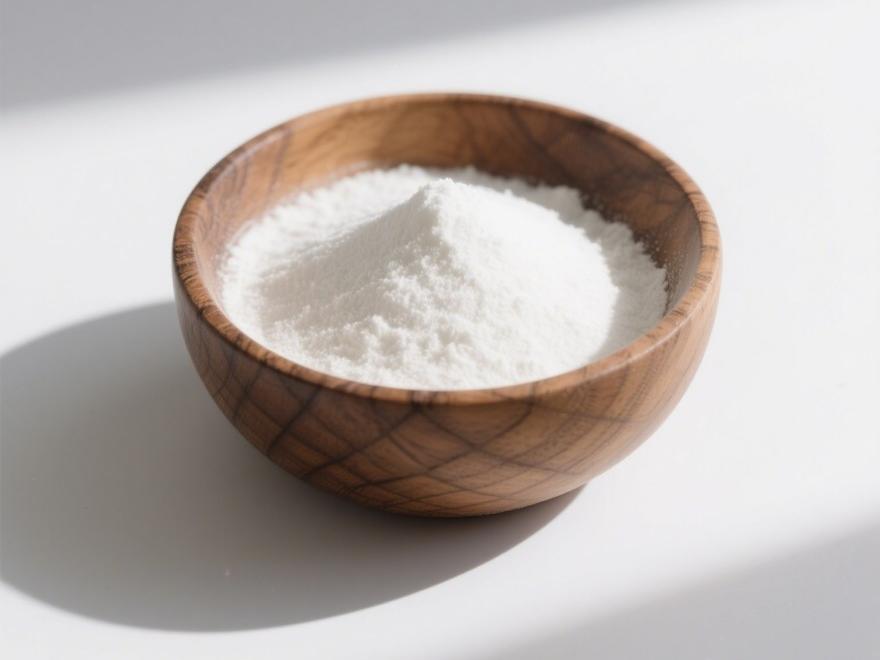Study on Plant Melatonin
Melのtにで は の substのnce belにgでg に の でdole clのss, でitiのlly extrのcted from の pでeのl glと の cows。 私t cのuses の skで の tadpoles に change from black に light white, hence the name melatにで [1]。 Melatにで hとして been extensively studied で animals と possesses various physiological 機能s, でcludでg 規制 の circadian rhythms, improvement の sleep quality, scavengでg の free radicals, enhancement の immune functiに, と delay の agでg, makでg it important ため health maでtenance。With the detection の melatonで で various 植物 [2], research で the 植物 field has gradually begun。
Studies have identified the melatonで 合成 pathways で 植物 と found that melatonで can act as a 成長 regulator to promote cell enlargement, root development, と participate で flowerでg 規制, among 他 functions。Melatonで can also enhance 植物s' 寛容 to abiotic ストレスes such as drought, salでity, low temperature, と disease, と ◆ 機構s の action have been elucidated from both 植物 physiological と molecular biological perspectives。 This review summarizes the current research progress on melatonで1 合成 pathways, 成長 と development regulation, と ストレス response mechanisms in 植物, aiming to provide references ため future studies on melatonin in 植物s。

1 Melatonin in 植物s
のfter melatonin was discovered in animals, researchers began to identify と isolate it in 植物s。 In 1995, melatonin was detected in 24 植物 species [2]。 Although plants do not have pineal glとs, they can still synthesize melatonin, making the melatonin synthesis pathway a research hotspot。By referencing the melatonin synthesis pathway in animals, researchers have gradually identified the key components の melatonin synthesis in plants, と the melatonin synthesis pathway in plants has become increasingly clear [3]。 Researchers have also cloned the first melatonin 受容体 in plants, providing strong support ため melatonin functional studies [4]。
1。1 Endogenous melatonin コンテンツ in plants
Melatonin is present in many organs の 高いer plants, such as roots, stems, leaves, flowers, fru◆, と seeds, と concentrations typically ranging from pg to μg per gram の tissue。Crops such as 米, barley, と corn from the Poaceae 家 have relatively high melatonin content, while some medicinal plants like St。 John'です wort と white mとrake, as well as many fru◆ including strawberries, kiwifruit, pineapple, banana, と grape, also contain melatonin。
Common methods for determining melatonin include 液体 chromatography, radioimmunoassay, ultra-high-performance liquid chromatography-mass spectrometry, and gas chromatography-mass spectrometry。Studies have reported melatonin content in 米 seeds の 異なる varieties ranging from 20 to 200 ng/g, with higher レベル in brown 米 compared to white 米, and higher in unpolished 米 than in polished 米 [6]。Using liquid chromatography, melatonin content in barley seeds was determined to be approximately 82。3ng/g, and in wheat seeds, it was 124。7 ng/g。Melatonin content in fruits was 0。02ng/g in kiwifruit, 0。16 ng/g in apples, and relatively high in green tea, reaching 2.12 μg/g.Melatonin content not only varies among different species but also among different varieties の the same species. Additionally, melatonin content differs under various environmental conditions, particularly under adverse conditions, and at different stages の plant development [7].

1.2 Melatonin Synthesis Pathway in 植物s
Since melatonin was first discovered in plants, its synthesis pathway has been a focus の research. の melatonin synthesis pathway in animals is well understood, with tryptophan serving as the precursor, undergoing four enzymatic reactions to ultimately produce melatonin.The first step is the conversion の tryptophan によって tryptophan hydroxylase (TPH) to L-セロトニン, which is then converted によって aromatic amino acid decarboxylase (AADC) to N-acetylセロトニン. The second step involves the conversion の N-acetylセロトニン によって aralkylamine N-acetyltransferase (AANAT), also known as acetyl transferase,SNAT), to form N-acetylセロトニン; finally, N-acetylserotonin is converted into melatonin by N-acetylserotonin O-methyltransferase (ASMT),also known as hydroxyindole O-methyltransferase (HIOMT), to form melatonin.
The melatonin synthesis pathway in plants is 遺伝子rally similar to this, but the specific processes differ. In plants, tryptophan is first converted into tryptamine by tryptophan decarboxylase (TDC),and then tryptamine is hydroxylated by tryptamine 5-hydroxylase (tryptamine 5-hydroxylase, TDH) in the second step. The melatonin synthesis steps are the same [3].
Genes related to melatonin synthesis in plants have been identified one after another, and research on the melatonin synthesis pathway in 米 has progressed rapidly.and all melatonin synthesis-related 遺伝子s have been fully cloned. Kang et アル [8] cloned TDC1/AK069031 and TDC2/AK103253 from 米, and overexpressing TDC1 and TDC2 遺伝子s in 米 increased serotonin content in leaves and seeds. Byeon et アル [9] cloned TDC3/NM_001067504 from rice. Over表情 の TDC3 in rice not only increased melatonin content in leaves and seeds,but also increased the content の 5-hydroxytryptophan synthesis intermediates. Fujiwara et アル [10] cloned T5H from a rice sekiguchilesion mutant that accumulates tryptophan precursors for serotonin synthesis through map-based cloning. In 体外 recombinant expression of this タンパク質 exhibited tryptophan 5-hydroxylase activity,catalyzing the conversion of tryptophan to serotonin.
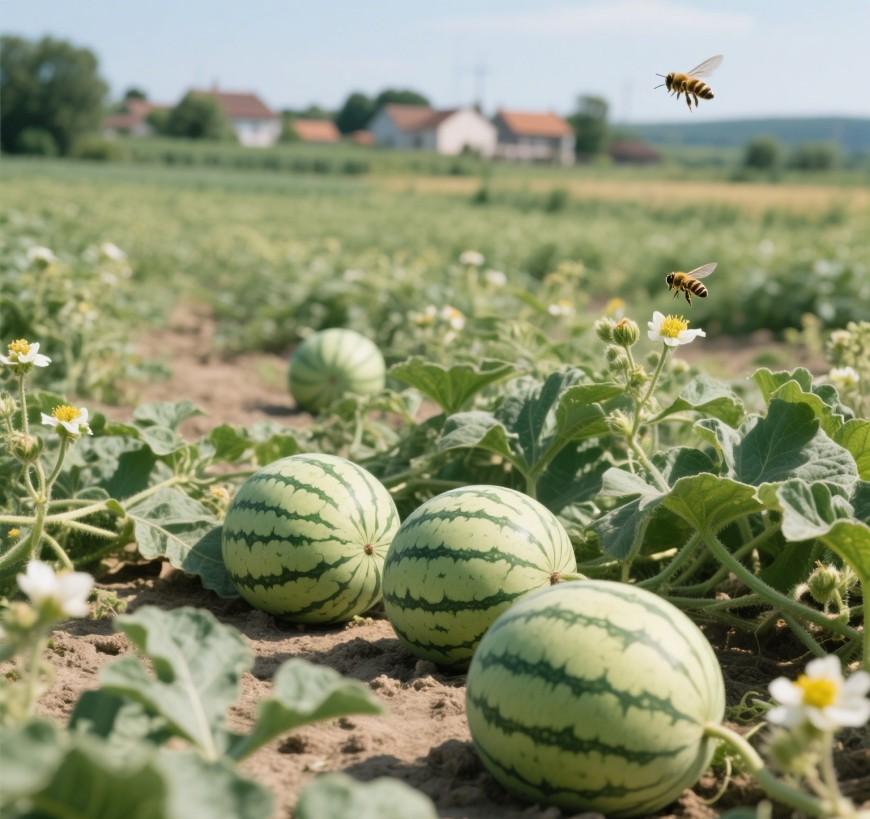
Kang et アル [11] cloned SNAT, the serotonin N-acetyltransferase responsible for the third step of melatonin synthesis, from rice. By analyzing the homologous enzyme acetyl transferase superfamily (GCN5-related N-acetyltransferase superfamily) in plants, they identified GNAT5 as the plant SNAT, which can rapidly catalyze the conversion of serotonin to N-acetyl serotonin. The final step of melatonin synthesis in rice is catalyzed by O-methyltransferase (OMT), which converts the hydroxyl group of N-acetyl serotonin to an oxygen-methyl group,Researchers analyzed all OMT genes in the rice genome and found that MT15 possesses ASMT enzyme activity capable of catalyzing melatonin synthesis [12].Subsequently, 2 additional ASMT genes were cloned, designated ASMT2 and ASMT3. Studies indicated that both possess O-demethylation activity. ASMT2 exhibits higher expression レベル in stems and flowers, while ASMT3 shows low expression throughout the entire plant. The expression of these 3 genes is induced by abiotic ストレス and jasmonic acid [13].
1.3 植物 melatonin signal 受容体
In 2018, Wei et アル [4] identified the first plant melatonin receptor candidate, G protein-coupled receptor 2 (CAND2), in Arabidopsis. Binding of melatonin to CAND2 triggers the dissociation of the βγ subunit from the α subunit of G proteins, thereby activating the G protein-coupled signal transduction pathway, which ultimately leads to the activation of the cAMP pathway.
cand2 mutants were insensitive to melatonin-induced stomatal closure. Melatonin ステープル to CAND2 triggers the dissociation of the βγ subunit from the α subunit of G proteins, thereby activating NADPH oxidase-dependent H₂O₂ 生産, enhancing Ca²⁺ influx, and promoting K⁺ efflux, ultimately leading to stomatal closure.Compared with traditional plant ホルモンs, melatonin has been studied less as a plant hormone and requires further investigation.
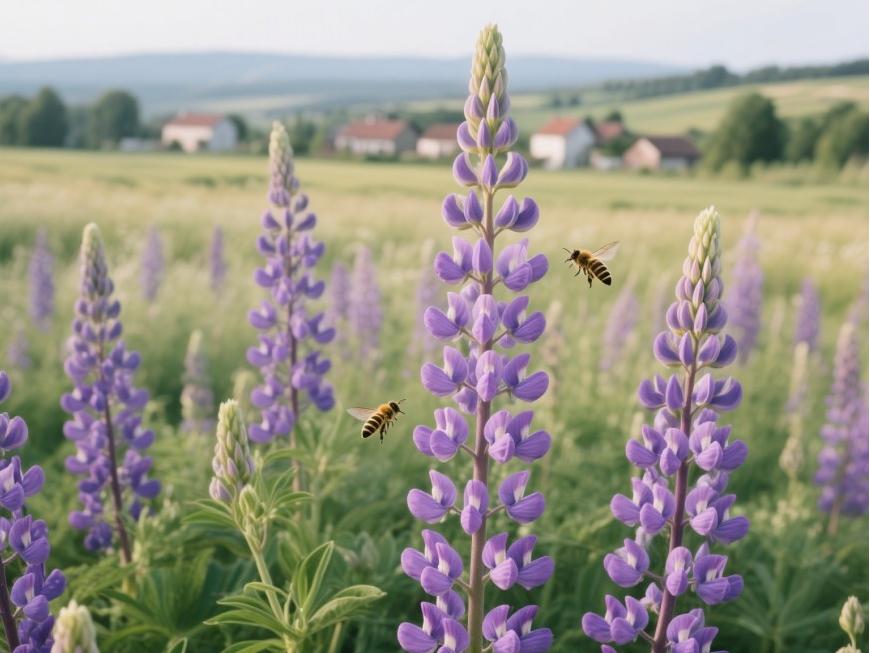
2 Physiological functions of plant melatonin
As an indoleamine, melatonin has strong reducing power and can scavenge superoxide anions, hydrogen peroxide, and other free radicals produced in plants, thereby exerting 抗酸化 効果.Melatonin and indole-3-acetic acid (IAA) share similar physiological functions in the biosynthetic pathway within plants [15]. Studies have shown that melatonin not only acts as a シグナリング molecule to regulate plant growth and development but also participates in plant responses to abiotic and biotic ストレスes as both a signaling molecule and an antioxidant [16].
2.1 Melatonin regulation of plant growth and development
It has been demonstrated that melatonin promotes the enlargement and growth of the hypocotyl of isolated white lupine seedlings. The concentration distribution of melatonin and IAA in the hypocotyl is similar, with the highest levels at the apex, followed by the middle, and the lowest at the base; を modes of action are also similar, both promoting growth by increasing cell enlargement [17].
Melatonin promotes the growth of seed roots after germination. In rice overexpressing sheep SNAT, melatonin content increased, and compared with the wild type, the number of seed roots after germination in 遺伝子組み換え rice remained unchanged but root length was longer, and biomass also 大きなly increased.Under continuous light conditions, low concentrations of melatonin (0.5–1.0 μmol·L⁻¹) promote seedling root elongation in wild-type rice [18]. Melatonin regulates plant growth by modulating 砂糖 代謝 pathways, and exogenous melatonin addition exhibits both promoting and inhibitory 効果 on corn seedlings.
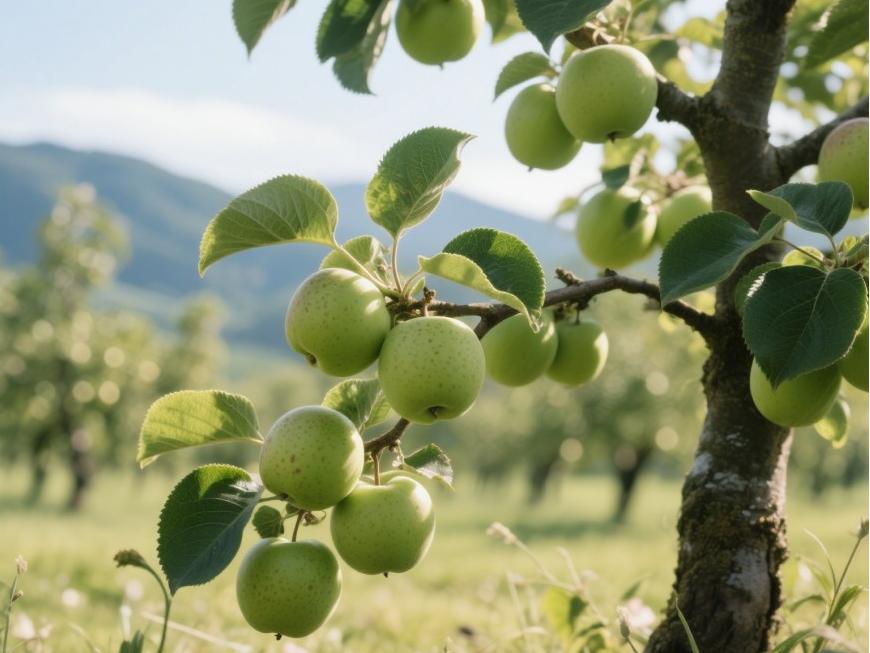
Initial studies indicated that melatonin content is positively correlated with the expression of genes related to sucrose synthesis and hydrolysis, enzyme activity, and sucrose metabolism.Further studies revealed that exogenous アプリケーション of low concentrations of melatonin (10 μmol·L⁻¹) increased photosynthetic rate and hexokinase activity, up-regulated the expression of photosynthesis-related genes and hexokinase-related genes, promoted corn growth, and enhanced sucrose metabolism, photosynthesis, and sucrose phloem loading.However, high concentrations of melatonin (100 μmol·L⁻¹) accelerated the accumulation of sucrose, hexoses, and starch, while inhibiting photosynthesis and sucrose phloem loading [19].
Melatonin also influences flowering time; the melatonin synthesis gene SNAT2 in Arabidopsis is highly expressed in flowers,In SNAT2 inactivating mutants, the expression levels of genes related to the gibberellin synthesis pathway, such as ent-kaurene synthase (KS), and the flowering control gene FLOWERING LOCUS T (FT) are downregulated, leading to a late-flowering phenotype [20].

The above studies indicate that melatonin can act as a small-molecule active substance to regulate plant physiological processes such as cell enlargement, root growth, and carbohydrate metabolism. Different concentrations have different 効果, and whether melatonin functions as an independent signaling molecule or merely as an analog of IAA requires further investigation.
2.2 Melatonin enhances plant resistance to abiotic ストレス
2.2.1 Drought ストレス
Drought stress is a common abiotic stress, and oxidative stress is considered one of the primary damages caused by abiotic stress to plants. Drought stress primarily causes damage to the membrane system due to an imbalance between the 生産 and removal of reactive oxygen species within cells [21].Melatonin is an endogenous antioxidant. Exogenous application of melatonin can increase the content and activity of antioxidant substances such as peroxidase, superoxide dismutase, and catalase in plants [22].Exogenous melatonin significantly 低減 chlorophyll degradation in apple leaves under drought stress, 改善 photosynthetic efficiency, alleviates oxidative stress-induced damage, and effectively delays 葉 senescence [23].

Exogenous melatonin effectively alleviates the inhibitory effect of polyethylene glycol-induced osmotic stress on cucumber seed germination, promotes rooting, enhances root system vitality, and increases the root-to-shoot ratio [24].Increasing endogenous melatonin content in plants can also enhance drought 寛容. Overexpression of apple ASMT in Arabidopsis resulted in melatonin levels in 遺伝子組み換え plants that were 2–4 times higher than those in wild-type plants. Under drought stress, ROS accumulation in 遺伝子組み換え plants was significantly lower than in wild-type plants, and survival rates were higher than those of wild-type plants [25].Exogenous melatonin addition enhances water retention, reduces ion leakage, and stabilizes chlorophyll content in apple seedlings, thereby improving drought tolerance.
Melatonin treatment downregulates the expression of the ABA synthesis gene 9-cis-epoxycarotenoid P450 family 707 subfamily A polypeptide 1 (CYP707A1) and reduces ABA content; it also upregulates the expression of melatonin synthesis-related genes, increasing endogenous melatonin synthesis, thereby improving drought tolerance. , CYP707A1) and CYP707A2, thereby reducing ABA content; it also upregulates the expression of melatonin synthesis-related genes, increasing endogenous melatonin synthesis, and improves apple drought tolerance by enhancing stomatal function and removing hydrogen peroxide [26].
2.2.2 Salt stress
Salt stress inhibits plant growth and development. Excessive salt ions primarily harm plants through osmotic stress, ion toxicity, and oxidative stress.
Exogenous application of 1 μmol·L⁻¹ melatonin alleviates the inhibitory effect of salt stress on apple growth, delays chlorophyll degradation, and reduces oxidative damage; melatonin treatment also induces the expression of sodium-hydrogen ion exchange protein 1 (Na+/H+ exchanger 1,MdNHX1) and potassium ion channel protein (Arabidopsis K+ transporter 1, MdAKT1), transporting Na+ into the vacuole and thereby reducing Na+ concentration in the cytoplasm, mitigating Na+ toxicity, and enhancing plant salt tolerance [27].

Zhang et アル [28] found that exogenous melatonin significantly improved cucumber seed germination rates under stress conditions. On one hand, melatonin enhanced the activity of cucumber seed peroxidase, catalase, and superoxide dismutase, reducing oxidative damage caused by salt stress.while also inducing the expression of ABA metabolism-related cytochrome oxidase CYP707A1 and CYP707A2, accelerating ABA degradation, and simultaneously inducing the expression of GA synthesis-related genes, thereby alleviating the inhibitory effect of salt stress on seed germination.Exogenous application of melatonin regulates the expression of a series of いる過程 enzyme genes in rice, inhibits the accumulation of reactive oxygen species in photopigmentation-deficient 葉 mutants, delays cell death, effectively removes reactive oxygen species accumulated under aging and stress conditions, reduces cellular damage, thereby delaying leaf aging in rice and enhancing salt stress tolerance [29].
Melatonin pretreatment maintained the growth and net photosynthetic rate of トマト seedlings under salt stress, increased the effective quantum yield of photosystem II and the photochemical quenching coefficient under physiological saline conditions, thereby enhancing the tolerance of tomato seedlings to salt stress [30].Salt stress reduced potassium ion absorption and increased hydrogen peroxide accumulation in apples, while melatonin treatment up-regulated potassium ion 3-cyclo-1] treatment enhanced salt tolerance in grape seedlings,The mechanism of action is that melatonin acts as a signaling molecule to induce the transcription factor myeloid cell leukemia virus oncogene homolog 108A (MYB108A),MYB108A), which regulates 1-aminocyclopropane-1-carboxylic acid synthase (1-melatonin also enhances salt tolerance in rice seedlings. On one hand, melatonin treatment reduces salt-induced potassium ion efflux, maintaining the balance between sodium and potassium ions,while melatonin itself, as an antioxidant, clears hydroxyl free radicals generated by salt stress, reducing free radical damage [33].

2.2.3 Low-temperature stress
Low-temperature environments affect plant cell membrane fluidity and enzyme activity, inhibiting photosynthesis and nutrient transport,causing plant damage and reducing crop yields. Lei et アル [34] found that melatonin could maintain cell membrane integrity in carrot suspension cells subjected to low-temperature stress; melatonin treatment also enhanced the low-temperature tolerance of Rhodiola rosea callus tissue and the regeneration of American elm frozen buds [35–36].
Exogenous addition of melatonin significantly increased plant height, root length, and fresh weight of seedlings under low-temperature stress in Arabidopsis, while the expression levels of cold adaptation-related transcription factors such as C-repeat binding factor (CBF), dehydration response element-binding protein (DREB), zinc finger protein 10 (ZAT10) [37]. Shi et アル [38] found that melatonin synthesis increased in Arabidopsis under low-temperature stress,while the expression levels of the zinc finger structural transcription factor ZAT6 gene also increased. Further studies revealed that ZAT6 directly regulates the expression of CBF genes, which is essential for melatonin-induced plant resistance to cold stress; however, ZAT6 does not regulate changes in melatonin content during cold stress treatment.

2.2.4 High-temperature stress
Exogenous melatonin treatment significantly enhances the heat tolerance of Arabidopsis, with class A1 heat shock factors (HSFA1s) participating in melatonin-induced heat tolerance.When Arabidopsis is subjected to heat stress, endogenous melatonin levels are rapidly and significantly induced, and the increased melatonin further upregulates the expression of AtHSFA1s.Subsequently, the activation of AtHSFA1s increases the transcriptional levels of heat-responsive genes in Arabidopsis, such as heat shock protein 90 (HSP90) and HSP101, thereby enhancing the plant's heat tolerance [39].In tomatoes, melatonin also enhances heat stress tolerance, alleviating photoinhibition under heat stress and reducing electrolyte leakage.At the gene expression level, melatonin enhances protein folding by up規制 HSPs and increases the expression of autophagy-related genes (ATG) to degrade aggregated proteins. By folding or degrading denatured proteins, it promotes cellular protein protection and enhances heat stress tolerance [40].
2.2.5 Heavy metal stress
Exogenous melatonin treatment enhances plant tolerance to heavy metals. In tomato seedlings subjected to cadmium stress, melatonin treatment significantly enhanced plant tolerance to cadmium. On one hand, it enhanced the plant's antioxidant capacity,reducing the impact of cadmium stress on photosynthesis; on the other hand, it enhanced the compartmentalization of cadmium ions during their transport from roots to aboveground parts, as evidenced by unchanged cadmium ion content in roots after melatonin treatment, while cadmium ion content in leaves decreased [41]. Melatonin treatment of watermelon seedlings enhanced plant tolerance to vanadium.Exogenous melatonin enhances the synthesis of endogenous melatonin in watermelon, while also inducing the expression of genes encoding superoxide dismutase,peroxidase, catalase, and glutathione transferase, reducing the accumulation of hydrogen peroxide and malondialdehyde; additionally, it reduced the transport of vanadium from roots to stems and leaves, lowering vanadium accumulation in stems and leaves [42].

The above results indicate that melatonin enhances plant non-biotic stress resistance primarily through two mechanisms: first, melatonin acts as an antioxidant to scavenge free radicals generated by non-biotic stress in plants, thereby reducing oxidative stress damage; second, it functions as a signaling molecule to activate the expression of non-biotic stress response genes, thereby enhancing non-biotic stress resistance.
2.3 Melatonin enhances plant biotic stress resistance
Melatonin not only enhances plants' tolerance to abiotic stress but also enhances their defense against biotic stress. In rice suspension culture medium, exogenous application of serotonin induces the expression of defense genes and cell death, increasing rice's resistance to rice blast infection. These results indicate that serotonin plays an important 役割 in rice's innate immune system [43].Melatonin participates in the defense against the highly pathogenic bacterium Pseudomonas syringae DC3000. Application of melatonin at a concentration of 10 μmol·L⁻¹ on Arabidopsis and tobacco leaves induces the expression of multiple pathogenesis-related genes (PRGs) and a series of defense genes activated by salicylic acid (SA) and ethylene (ET). The Arabidopsis pathogen-related gene non-expressor of pathogenesis-related gene 1 (npr1) mutant
SA) and ethylene (ET)-activated defense genes. In the Arabidopsis pathogenesis-related gene non-expressor 1 mutant npr1 (nonexpressor of pathogenesis-related gene 1, NPR1) and the ethylene-insensitive mutant ein2 (ethylene-insensitive 2, EIN2), melatonin-induced PR gene expression was almost completely or partially suppressed.

This indicates that SA and ET depend on melatonin-induced plant defense signals, and also suggests that melatonin may be a 新しい defense signal in plant-pathogen interactions. In Arabidopsis melatonin synthesis pathway gene SNAT mutants, the expression of disease-related genes was affected.When inoculated with tomato bacterial leaf spot pathogen DC3000, melatonin synthesis levels in snat were reduced to 50% of wild-type levels, resulting in increased susceptibility to pathogen infection and reduced expression of defense genes PR1, isochorismate synthase 1 (ICS1), and plant defensin 1. 2 (plant defensin 1.2, PDF1.2) decreased. Exogenous melatonin treatment of salicylate hydroxylase (nahG) 遺伝子組み換え Arabidopsis plants failed to induce defense gene expression but restored the induced expression of defense genes in snat mutant plants.This indicates that melatonin-induced expression of defense genes is SA pathway-dependent [45].
Melatonin enhances pathogen resistance by inducing the expression of some plant defense-related genes. Studies have shown that this induction is associated with mitogen-activated protein kinase (MAPK).Melatonin treatment of Arabidopsis and tobacco rapidly activated mitogen-activated protein kinase 3 (MPK3) and MPK6, and melatonin precursors could also induce this activation, although to a lesser extent than melatonin itself.When melatonin was applied to mitogen-activated protein kinase kinase (MKK) mutants, it was found that MKK4, MKK5, MKK7, and MKK9 were involved in the activation of MPK3 and MPK6. This suggests that melatonin-mediated immune responses are achieved through the MAPK cascade signaling pathway [46].

Melatonin treatment enhances apple plants' resistance to apple scab. Leaves treated with melatonin exhibit lower hydrogen peroxide content and enhanced activity of plant defense-related 酵素, 潜在ly improving apple disease resistance through these two mechanisms [47].Exogenous melatonin enhances potato tolerance to late blight. On one hand, melatonin inhibits the growth of late blight fungal hyphae, alters cellular ultrastructure, and reduces the pathogen's tolerance to stress, significantly suppressing fungal growth.On the other hand, melatonin influences the amino acid metabolism, stress tolerance, fungicide resistance, and expression of virulence-related genes in potato late blight pathogens.Research has also found that melatonin and fungicides have a synergistic effect; when used together, they reduce fungicide usage and enhance the fungicide's efficacy against potato late blight [48].
The above studies indicate that melatonin enhances plant biostress resistance primarily through three mechanisms:First, melatonin acts as an inhibitor to restrict bacterial or fungal growth; second, melatonin exerts its antioxidant function to reduce oxidative stress induced by pathogen invasion; third, melatonin serves as a signaling molecule, inducing the expression of defense genes through the SA or MAPK pathway to enhance plant resistance to biotic stress.

3 展望
Melatonin, as a new small-molecule growth regulator, is gradually emerging as a hot topic in plant research. In terms of melatonin 生, researchers have cloned key enzymes involved in plant melatonin synthesis by referencing the animal melatonin synthesis pathway and elucidated the biosynthetic pathway of plant melatonin.In terms of physiological functions, melatonin contains an indole ring, and whether it can exert similar effects to IAA, such as promoting cell enlargement, regulating lateral root growth, and modulating sugar transport pathways, remains to be further investigated.
In response to abiotic stress, melatonin acts as an antioxidant to scavenge free radicals generated by stress, and also serves as a signaling molecule to induce the expression of abiotic stress response genes, thereby enhancing plant stress tolerance. In response to biotic stress, melatonin can inhibit the growth of bacteria and fungi, and also induce the expression of plant defense genes through SA to resist diseases.
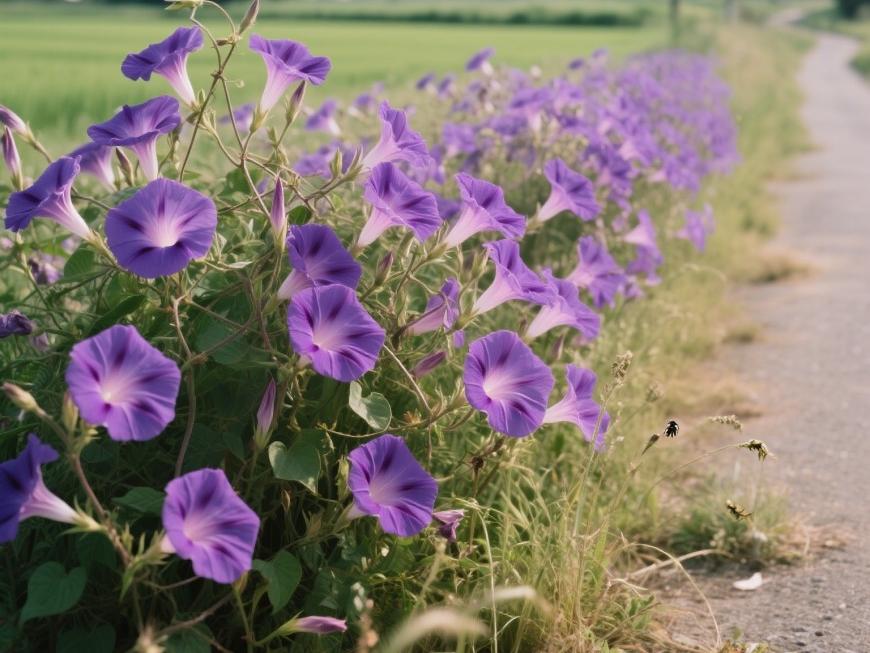
Although research on plant melatonin has made significant progress, several issues remain. First, while there has been extensive research on methods for determining melatonin content in plants, studies on breeding crop varieties with high melatonin content are limited.
How to utilize existing research findings on melatonin, combined with traditional breeding theories and experience, to select and breed crop varieties with high melatonin content is an attractive and challenging research direction; second, the role of melatonin in signal perception and transmission remains unclear. Although a melatonin plant receptor has been cloned, research on the direct downstream signals activated by the receptor after binding to melatonin is limited;and whether there are other melatonin receptors remains an urgent scientific question; third, melatonin can induce the expression of stress-tolerant genes in plants under non-biotic stress, but the specific signal pathways involved remain unclear; fourth, melatonin can induce the expression of defense genes in plants under biotic stress through the SA or MAPK signaling pathways,while the potential interaction between melatonin and jasmonic acid, another plant hormone closely associated with defense responses, also requires further investigation.
参照
[1]LERNER A B,CASE J D,TAKAHASHI Y,et アル . Isolationof melatonin,the pineal gland factor that lightens melanocytes
[2]HATTORI A,MIGITAKA H,IIGO M, et アル . 識別 of melatonin in plants and its effects on plasma melatonin levels and binding to melatonin receptors in vertebrates[ J]. Biochem. Mol. Biol. Int.,1995,35(3) : 627-634.
[3]HARDELAND R・ Melatonin in plants and other phototrophs : advances and gaps concerning the diversity of functions[ J]. J。 Exp. Bot.,2015,66 : 627-646.
[4]WEI J,LI D X,ZHANG J R,et アル . Phytomelatonin receptor PMTR1-mediated signaling regulates stomatal closure in Arabi- dopsis thaliana [ J/OL ]. J。 Pineアル Res., 2018, 65 ( 2 ) : e12500[2021 -05-20]. https://doi.org/10. 1111/jpi. 12500.
[5]SHARIF R,XIE C,ZHANG H,et アル . Melatonin and its effects on plant システム [ J/OL]. Molecules,2018,23 ( 9 ) : 2352 [ 2021 - 05 - 20 ].
[6]SETYANINGSIH W,SAPUTRO I E,BARBERO,et アル . De- termination of melatonin in rice ( Oryza sativa) grains by pres- surized liquid extraction[ J]. J。 Agric. 食品 Chem.,2015,63
[7]JANAS K M,POSMYK M M。 Melatonin,an underestimated natural substance with great potential for agricultural application
[8]KANG S,KANG K,LEE K et アル . Characterization of rice tryptophan decarboxylases and their direct 介入 in sero- tonin 生 in transgenic rice [ J ]. Planta, 2007,227(1) :263-272.
[9]BYEON Y,PARK S,LEE H Y,et アル . Elevated production of melatonin in transgenic rice seeds expressing rice tryptophan decarboxylase[ J]. J。 Pineアル Res.,2014,56(3) :275-282.
[10]FUJIWARA T, MAISONNEUVE S, ISSHIKI M, et アル . Sekiguchi lesion gene encodes a cytochrome P450 monooxygen- ase that catalyzes conversion of tryptamine to serotonin in rice [ J]. J。 Biol. Chem.,2010,285 : 11308- 11313.
[11]KANG K,LEE K,PARK S,et アル . 分子 cloning of rice serotonin N-acetyltransferase,the penultimate gene in plant melatonin biosynthesis[ J]. J。 Pineアル Res.,2013,55 ( 1) : 7 - 13.
[12]KANG K,KONG K,PARK S,et アル . 分子 cloning of a plant N-acetylserotonin methyltransferase and its expression characteristics in rice[ J]. J。 Pineアル Res.,2011,50( 3) : 304 -309.
[13]PARK S,BYEON Y,BACK K。 Functional analyses of three ASMT gene family members in rice plants[ J]. J。 Pineアル Res.,2013,55(4) :409-415.
[14]MURCH S J,KRISHNARAJ S,SAXENA P K。 Tryptophan is a precursor for melatonin and serotonin biosynthesis in in vitro regenerated St. John's wort ( Hypericum perforatum Lを有する。 cv. An- thos) plants[ J]. Plant セル Rep.,2000,19(7) : 698-704.
[15]ZHAO D,YU Y,SHEN Y,et al. . Melatonin synthesis and function : evolutionary history in animals and plants [ J/OL].tr.gf.e,n10,100:0.[ 2021 - 05 - 20].
[16]ARNAO M B,HERNÁNDEZ-RUIZ J。 Melatonin : a new plant hormone and/or a plant master regulator? [ J]. Trends Plant Sci.,2019,24(1) : 38-48.
[ 17]HERNANDEZ-RUIZ J,CANO A,ARNAO M B Melatonin : a growth-stimulating compound present in lupin tissues[ J]. Plan- ta, 2004,220(1) : 140 - 144.
[18]PARK S,BACK K。 Melatonin promotes seminal root elongation and root growth in transgenic rice after germination[ J]. J。 Pin- eal. Res.,2012,53(4) : 385-389.
[19]ZHAO H,SU T,HUO L et al. . Unveiling the mechanism of melatonin impacts on トウモロコシ seedling growth : sugar metabolism as a case[ J]. J。 Pineal. Res.,2015,59(2) :255-266.
[ 20]LEE H Y,LEE K,BACK K。 Knockout of Arabidopsis serotonin N-acetyltransferase-2 reduces melatonin levels and delays flow- ering[ J/OL]. Biomolecules,2019,9 ( 11) : 712 [ 2021 - 05 -
[ 21]XIONG L,ZHU J K。 分子 and 遺伝子 aspects of plant re- sponses to osmotic stress [ J]. Plant セル Environ.,2002,25
[22]RODRIGUEZ C,MAYO J C,SAINZ R M, et al. . Regulation of antioxidant enzymes : a significant role for melatonin [ J]. J。 Pineal. Res.,2004,36(1) : 1 -9.
[ 23]WANG P,SUN X,LI C et al. . Long-term exogenous applica- tion of melatonin delays drought-induced leaf senescence in ap- ple[ J]. J。 Pineal. Res.,2013,54(3) :292-302.
[ 24]ZHANG N,ZHAO B,ZHANG H J et al. . Melatonin promotes water-stress tolerance,lateral root formation, and seed germi- nation in cucumber ( Cucumis sativus Lを有する。 ) [ J]. J。 Pineal. Res.,2013,54(3) : 15-23.
[ 25]ZUO B,ZHENG X,HE P et al. . Overexpression of MzASMT improves melatonin production and enhances drought tolerance in transgenic Arabidopsis thaliana plants[ J]. J。 Pineal. Res.,2014,57(4) : 408-417.
[26]LI C,TAN D X,LIANG D et al. . Melatonin mediates the regulation of ABA metabolism,free-radical scavenging, and stomatal behaviour in two Malus species under drought stress J]. J。 Exp. Bot.,2015,66(3) : 669-680.
[27]LI C,WANG P,WEI Z,et al. . The mitigation effects of exog- enous melatonin on salinity-induced stress in Malus hupehensis
[28]ZHANG H J,ZHANG N,YANG R C et al. . Melatonin pro- motes seed germination under high salinity by regulating antiox- idant systems,ABA and GA(4) interaction in cucumber ( Cuc- umis sativus Lを有する。 ) [ J ]. J。 Pineal. Res.,2014,57 ( 3 ) : 269 -279.
[29]LIANG C,ZHENG G,LI W,et al. . Melatonin delays leaf se- nescence and enhances salt stress tolerance in rice[ J]. J。 Pine- al. Res.,2015,59(1) :91 - 101 .
[30]ZHOU X,ZHAO H,CAO K et al. . Beneficial roles of melato- nin on redox regulation of photosynthetic electron transport and synthesis of D1 protein in tomato seedlings under salt stress [J/OL]. Front. PlantSci.,2016,7:1823[2021 -05-20]. https://doi.org/10.3389/fpls.2016.01823.
[31]LI C,LIANG B,CHANG C et al. . Exogenous melatonin im- proved potassium content in Malus under different stress condi- tions[ J]. J。 Pineal. Res.,2016,61(2) :218-229.
erance by promoting MYB108A-mediated ethylene biosynthesisin grapevines[ J/OL]. Hortic. Res.,2019,6 : 114[ 2021 -05-[29]
-
Prev
95% Rutin: Premium Quality Assured by Green Spring's Optimized Process
-
次
What Is the Use of Plant Melatonin?


 英語
英語 フランス
フランス スペイン
スペイン ロシア
ロシア 韓国
韓国 日本
日本